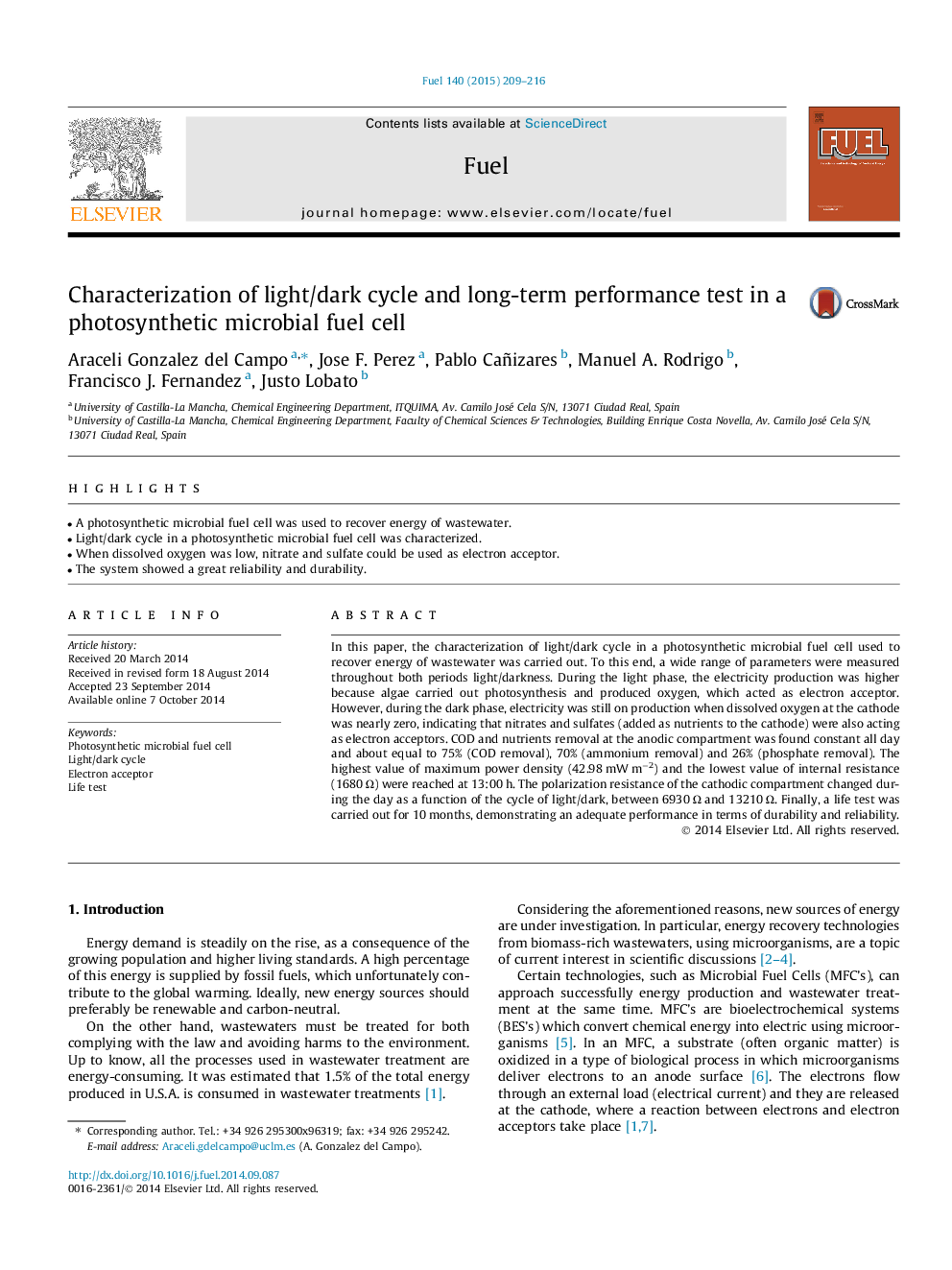| Article ID | Journal | Published Year | Pages | File Type |
|---|---|---|---|---|
| 6636178 | Fuel | 2015 | 8 Pages |
Abstract
In this paper, the characterization of light/dark cycle in a photosynthetic microbial fuel cell used to recover energy of wastewater was carried out. To this end, a wide range of parameters were measured throughout both periods light/darkness. During the light phase, the electricity production was higher because algae carried out photosynthesis and produced oxygen, which acted as electron acceptor. However, during the dark phase, electricity was still on production when dissolved oxygen at the cathode was nearly zero, indicating that nitrates and sulfates (added as nutrients to the cathode) were also acting as electron acceptors. COD and nutrients removal at the anodic compartment was found constant all day and about equal to 75% (COD removal), 70% (ammonium removal) and 26% (phosphate removal). The highest value of maximum power density (42.98 mW mâ2) and the lowest value of internal resistance (1680 Ω) were reached at 13:00 h. The polarization resistance of the cathodic compartment changed during the day as a function of the cycle of light/dark, between 6930 Ω and 13210 Ω. Finally, a life test was carried out for 10 months, demonstrating an adequate performance in terms of durability and reliability.
Related Topics
Physical Sciences and Engineering
Chemical Engineering
Chemical Engineering (General)
Authors
Araceli Gonzalez del Campo, Jose F. Perez, Pablo Cañizares, Manuel A. Rodrigo, Francisco J. Fernandez, Justo Lobato,
